Malaysia is a fantastic land of dramatic contrasts. Steeped in cultural and ancient religions, it is also famous for having one of the most advanced and robust economies in Southeast Asia. Our well-travelled writer Ed Roberts opens the door to one of Southeast Asia’s most fantastic countries.
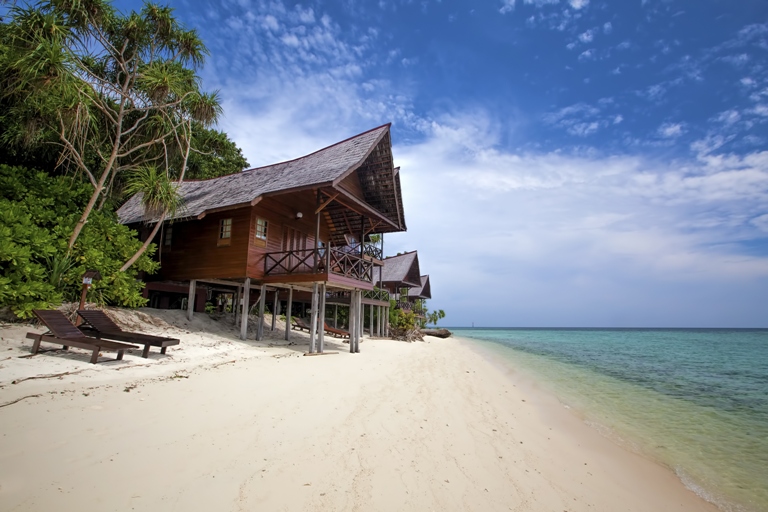
Divided into two land masses by the South China Sea, the prosperous and slightly advanced Malaysia Peninsula, home to the nation’s major cities and seat of government, lies to the west. To its east is Malaysian Borneo – well known for its jungles, wild orang utans and its famous neighbour the Kingdom of Brunei.
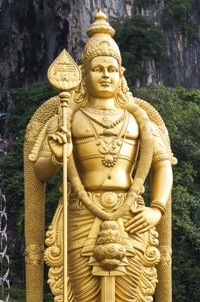 At first glance, Malaysia’s largest cities appear to be futuristic yet closer exploration reveals old neighbourhoods full of old charm and traditional architecture displaying influences from many different cultures. Mosque minarets vie for sky space but are dwarfed by some of the world’s tallest structures. For instance, Kuala Lumpur (KL) is home to the Petronas Towers, former holders of the record for the planet’s tallest building (for at least ten minutes). The modern blends effortlessly with the old as traces of the country’s tussled past linger round every street corner. Architectural relics from the British Empire and the East India Company periods are still to be found all over, namely KL’s central rail station or Fort Cornwallis in Georgetown. Reminders of the Japanese invasion in WW2 can still be found too but are far less prevalent. These days the Malaysians themselves are making their own indelible mark on the land.
At first glance, Malaysia’s largest cities appear to be futuristic yet closer exploration reveals old neighbourhoods full of old charm and traditional architecture displaying influences from many different cultures. Mosque minarets vie for sky space but are dwarfed by some of the world’s tallest structures. For instance, Kuala Lumpur (KL) is home to the Petronas Towers, former holders of the record for the planet’s tallest building (for at least ten minutes). The modern blends effortlessly with the old as traces of the country’s tussled past linger round every street corner. Architectural relics from the British Empire and the East India Company periods are still to be found all over, namely KL’s central rail station or Fort Cornwallis in Georgetown. Reminders of the Japanese invasion in WW2 can still be found too but are far less prevalent. These days the Malaysians themselves are making their own indelible mark on the land.
During the late 18th and 19th centuries, Great Britain established colonies and protectorates in the area of current Malaysia; these were later occupied by Japan from 1942 to 1945. In 1948, the British-ruled territories on the Malay Peninsula (excepting Singapore) formed the Federation of Malaya, which became independent in 1957.
 Malaysia was formed in 1963 when the former British colonies of Singapore as well as Sabah and Sarawak on the northern coast of Borneo joined the Federation. The first several years of the country's independence were marred by: a Communist insurgency; a series of Indonesian confrontations; Filipino claims to Sabah; and Singapore's departure from the Federation in 1965. Beyond infrequent border clashes with Thailand, its neighbour to the north, Malaysia has remained relatively peaceful for over 50 years.
Malaysia was formed in 1963 when the former British colonies of Singapore as well as Sabah and Sarawak on the northern coast of Borneo joined the Federation. The first several years of the country's independence were marred by: a Communist insurgency; a series of Indonesian confrontations; Filipino claims to Sabah; and Singapore's departure from the Federation in 1965. Beyond infrequent border clashes with Thailand, its neighbour to the north, Malaysia has remained relatively peaceful for over 50 years.
Malaysia has a multi-ethnic, multicultural, and multilingual society. The original culture of the area stemmed from indigenous tribes that inhabited it, along with the Malays who later moved there. Substantial influence exists from Chinese and Indian cultures, dating back to when foreign trade began. Other cultural influences include the Persian, Arabic, and British.
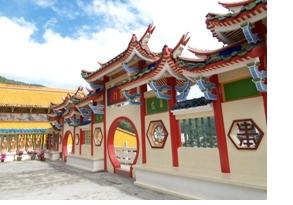 The infrastructure of Malaysia is one of the most developed in Southeast Asia. Fresh water is available to over 95 per cent of the population. Its telecommunications network is second only to Singapore's in the region. The country has seven international ports, the major one being the Port Klang. Although rural areas have been the focus of great development, they still lag behind areas such as the west coast of Peninsular Malaysia namely KL, Georgetown, Putrajaya and Malacca. The economy has traditionally been fuelled by its natural resources, but is expanding in the sectors of science, tourism, commerce and medical tourism. Its national motor car brand, the Proton, is held up as an international success story of the 2000s.
The infrastructure of Malaysia is one of the most developed in Southeast Asia. Fresh water is available to over 95 per cent of the population. Its telecommunications network is second only to Singapore's in the region. The country has seven international ports, the major one being the Port Klang. Although rural areas have been the focus of great development, they still lag behind areas such as the west coast of Peninsular Malaysia namely KL, Georgetown, Putrajaya and Malacca. The economy has traditionally been fuelled by its natural resources, but is expanding in the sectors of science, tourism, commerce and medical tourism. Its national motor car brand, the Proton, is held up as an international success story of the 2000s.
Alcoholic drinks aren’t banned in Malaysia but they are hard to find in some regions. However delicious food is in abundance thanks to the cultural drift and the wonderful blend of indigenous, Indian and Chinese cuisine. It’s even possible to find the best calzone outside of Italy in Malaysia (it’s to be found in a restaurant along Lebuh Chulia in Georgetown). If you are a ‘gastro wimp’ you can also find familiar brands from the west in all of the major cities and even some of the larger towns. You won’t find pork on the menu though even if you see sausages or bacon on the menu, so fans of sizzling pig flesh you’d do well to avoid the strange substitute that’s served in its place.
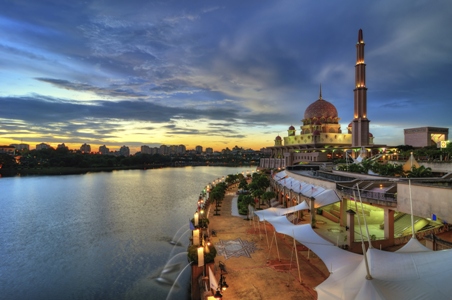 Great places to visit are the Gen Ting Highlands Theme Park which is home to the world’s longest cable car ride; the ancient port of Malacca for its evidence of Portuguese inhabitation and its wonderful streets and temples and the Cameron Highlands, to escape the hot weather and its miles of rainforest trails and tea plantations. In KL alone you can visit Batu Caves, a world famous pilgrimage for Hindus complete with intimidating monkeys; Kek Lok Si near Georgetown; the Petronas Towers; the strangely forlorn South Asian Space Museum; and the world’s largest open air aviary. The east coast of Peninsula Malaysia is predominantly inhabited by Muslims and it offers a truly excellent road trip for holiday makers who want to escape virtually everything that reminds them of Europe or the USA. Along the same coast you’ll find the world’s most remote Club Med (at Cherating); the beautiful honeymoon destination, the Perhentian Islands; and the involving cities of Kuala Terengganu and Kota Bharu.
Great places to visit are the Gen Ting Highlands Theme Park which is home to the world’s longest cable car ride; the ancient port of Malacca for its evidence of Portuguese inhabitation and its wonderful streets and temples and the Cameron Highlands, to escape the hot weather and its miles of rainforest trails and tea plantations. In KL alone you can visit Batu Caves, a world famous pilgrimage for Hindus complete with intimidating monkeys; Kek Lok Si near Georgetown; the Petronas Towers; the strangely forlorn South Asian Space Museum; and the world’s largest open air aviary. The east coast of Peninsula Malaysia is predominantly inhabited by Muslims and it offers a truly excellent road trip for holiday makers who want to escape virtually everything that reminds them of Europe or the USA. Along the same coast you’ll find the world’s most remote Club Med (at Cherating); the beautiful honeymoon destination, the Perhentian Islands; and the involving cities of Kuala Terengganu and Kota Bharu.
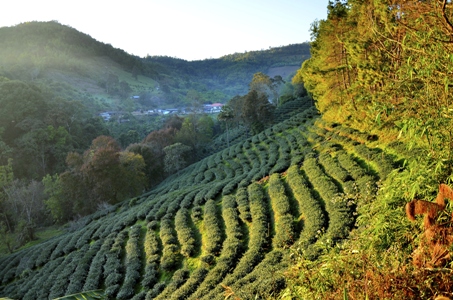 Malaysia has to be a top pick amongst travellers that love to get lost in a friendly and interesting country. It’s a thoroughly immersive experience. The cities are modern enough to attract immigrants with skills in the IT and finance sectors from India, China and Europe. There is also a government scheme called ‘Malaysia – My Second Home’ that encourages westerners to settle there with an attractive and seemingly straightforward immigration process that allows overseas residents to live there for ten years whilst still retaining citizenship of their country of origin.
Malaysia has to be a top pick amongst travellers that love to get lost in a friendly and interesting country. It’s a thoroughly immersive experience. The cities are modern enough to attract immigrants with skills in the IT and finance sectors from India, China and Europe. There is also a government scheme called ‘Malaysia – My Second Home’ that encourages westerners to settle there with an attractive and seemingly straightforward immigration process that allows overseas residents to live there for ten years whilst still retaining citizenship of their country of origin.
Malaysia is a country with a difference where people can truly realise the meaning of ‘escape.’ It’s certainly an upwardly mobile country too and a really friendly, welcoming one at that.
Photos: From top to bottom: Lankayan Island, off Borneo; Statue at the Batu Caves; The Petronas Towers; Kek Lok Si temple; The floating Putra Mosque; A tea plantation in the Cameron Highlands.
An Unsolved Malaysian Mystery
At around 3pm on Easter Sunday on 26 March, 1967 Jim Thompson, internationally known as the ‘Thai Silk King’, walked out of Moonlight Cottage where he was holidaying with friends in Malaysia's Cameron Highlands and was never seen again.
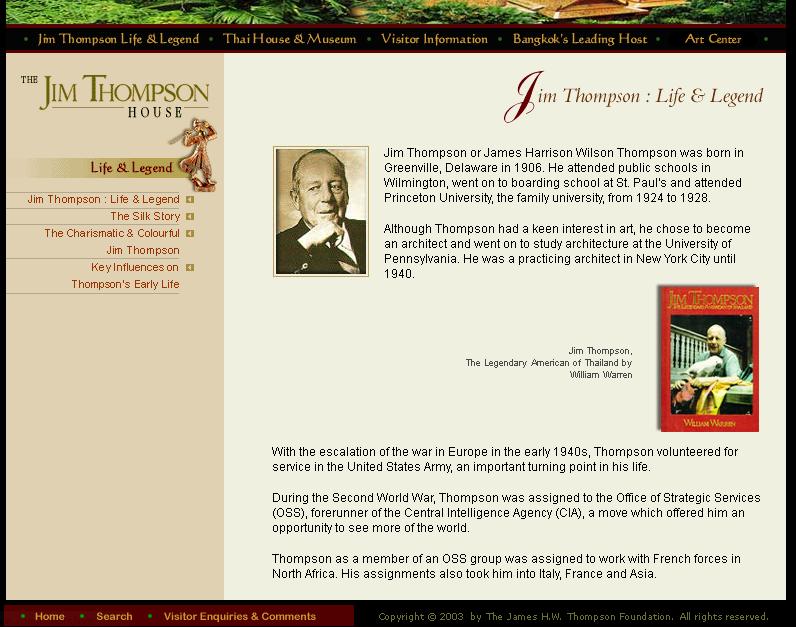 Thompson's disappearance would go on to become one of South East Asia's greatest modern mysteries. There are many conspiracy theories that rose up in the wake of Thompson’s vanishing. One aspect of his life that added fuel to rumours of foul play was his time during WW2 working for the US precursor to the CIA.
Thompson's disappearance would go on to become one of South East Asia's greatest modern mysteries. There are many conspiracy theories that rose up in the wake of Thompson’s vanishing. One aspect of his life that added fuel to rumours of foul play was his time during WW2 working for the US precursor to the CIA.
After the war Thompson settled in Bangkok and in 1948 started the Thai Silk Company. In doing so he helped to rebuild the Thai silk industry. His involvement in the trade made him a millionaire.
To this day, Mr Thompson has never been found and none of the conspiracies have been proven to be true.
There is a Jim Thompson History and Silk Museum in Thailand.
To read more about the mystery visit: http://www.jimthompsonhouse.com/life/index.asp
*Jim Thompson, the 'Thai Silk King' is no relation to Crown Worldwide Group’s own Jim Thompson.
Click here to view the next Editor's pick